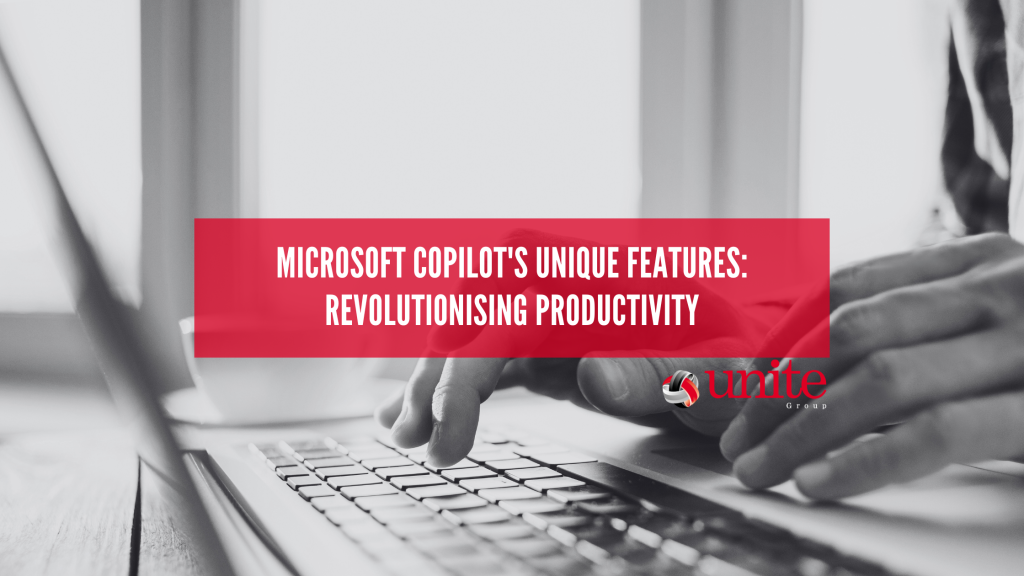
The integration of AI into productivity tools has brought about significant advancements, with Microsoft leading the way through its innovative Copilot. These AI-powered assistants are designed to enhance user experience, streamline workflows, and provide intelligent support across various applications. In this blog, we explore the unique features of Microsoft Co-pilot that sets them apart from other AI tools in the market.
Intelligent Contextual Assistance
One of Microsoft Co-pilot’s unique features is its ability to provide intelligent contextual assistance. Unlike other AI tools which require explicit commands, Microsoft Co-pilot is designed to understand the context of the user’s actions and provide relevant suggestions. This capability is powered by advanced natural language processing (NLP) and machine learning algorithms. These tools analyse user behaviour and adapt accordingly.
For instance, when drafting an email in Outlook, the Co-pilot can suggest responses based on the email’s content. This saves time and ensures more accurate communication. Similarly, in Excel, it can recommend formulas and data visualisations tailored to the dataset being used.
Seamless Integration Across Microsoft 365
Microsoft Copilot’s unique features are amplified by its seamless integration across the Microsoft 365 suite. Whether you’re working on Word, Excel, PowerPoint, or Teams, the Co-pilot is there to assist. This integration ensures a consistent user experience and allows for uninterrupted workflow transitions between different applications.
In PowerPoint, for example, Co-pilot can help design visually appealing slides by suggesting layout changes, graphics, and animations. In Teams, it can assist in scheduling meetings, setting agendas, and even summarising discussions, making collaboration more effective.
Microsoft Copilot’s Unique Features: User Experience
Another standout among Microsoft Copilot’s unique features is its ability to provide a personalised user experience. The AI learns from individual user interactions, tailoring its suggestions and actions to match personal preferences and work habits. This personalisation extends beyond simple task automation, such as recommending project management tools based on past usage patterns.
Over time, the Co-pilot becomes more adept at predicting the user’s needs, offering increasingly relevant suggestions that can significantly enhance productivity. This adaptive learning capability ensures that the Co-pilot remains a valuable tool for both new and seasoned users.
Advanced Security and Compliance
Security and compliance are critical considerations in any AI tool, and Microsoft Copilot’s unique features include advanced measures in these areas. Built on the robust security framework of Microsoft 365, the Co-pilot ensures that user data is protected through encryption and stringent access controls. It also adheres to global compliance standards, making it a reliable choice for organisations with strict regulatory requirements.
Moreover, the Copilot’s AI models are designed to operate within the boundaries of an organisation’s data policies, ensuring that sensitive information is handled appropriately. This focus on security and compliance provides users with peace of mind while leveraging AI capabilities.
Collaborative Features
Collaboration is at the heart of modern workplaces, and Microsoft Co-pilot’s unique features include a suite of tools designed to enhance teamwork. In addition to assisting with individual tasks, the Copilot can facilitate collaborative efforts by integrating with Microsoft Teams. This works similarly with other communication platforms.
For instance, during a team project, Co-pilot can help distribute tasks, monitor progress, and provide updates to all team members. It can also integrate with project management tools like Microsoft Planner, ensuring that everyone is on the same page and that deadlines are met efficiently.
Continuous Improvement and Updates
Microsoft Copilot’s unique features are constantly evolving, thanks to Microsoft’s commitment to continuous improvement and regular updates. The company actively listens to user feedback and incorporates it into subsequent versions of the Copilot, ensuring that it remains relevant and effective in meeting user needs.
These updates often include enhancements in AI capabilities, integration with new applications, and improvements in user interface design. This ongoing development ensures that Microsoft Co-pilot stays ahead of the curve in the rapidly advancing field of AI.
Conclusion
In summary, Microsoft Copilot’s unique features make it a standout AI tool in the productivity landscape. Its intelligent contextual assistance, seamless integration across Microsoft 365, personalised user experience, advanced security and compliance, collaborative features, and commitment to continuous improvement collectively set it apart from other AI assistants. By leveraging these capabilities, users can significantly enhance their productivity and streamline their workflows. This without a doubt makes Microsoft Co-pilot an indispensable asset in modern workplaces.
